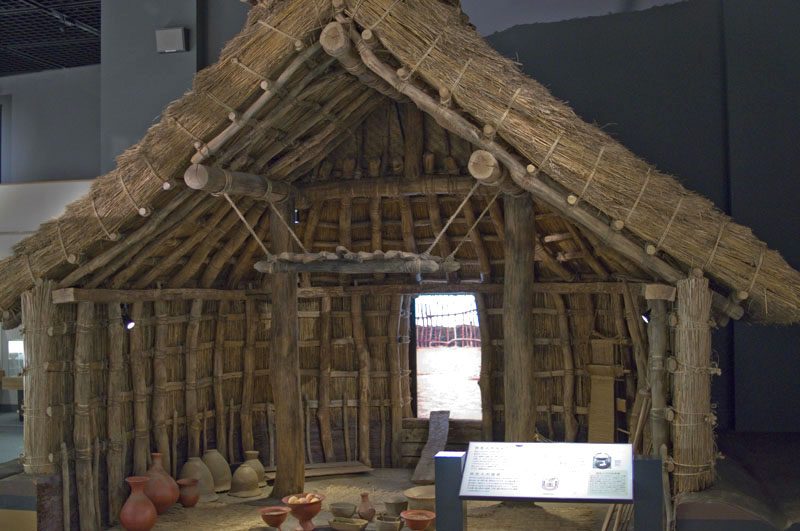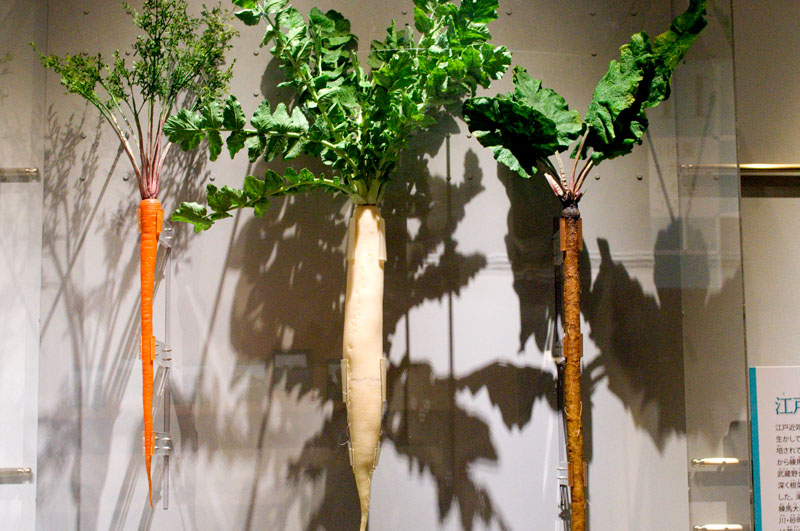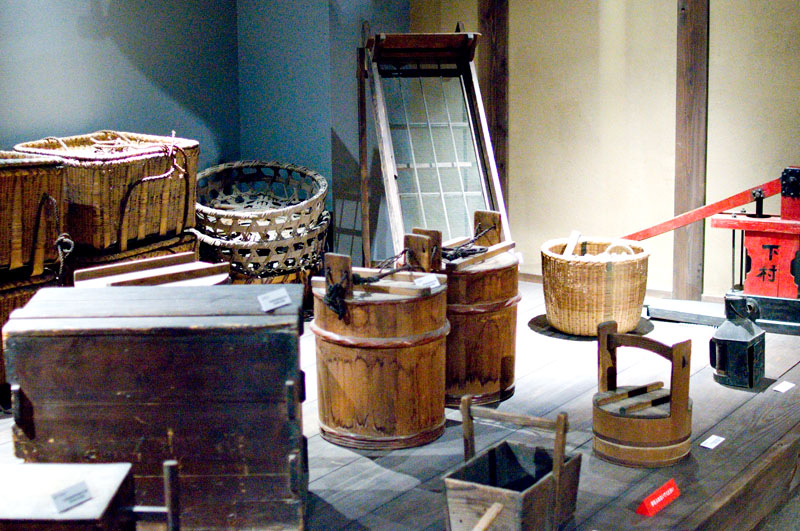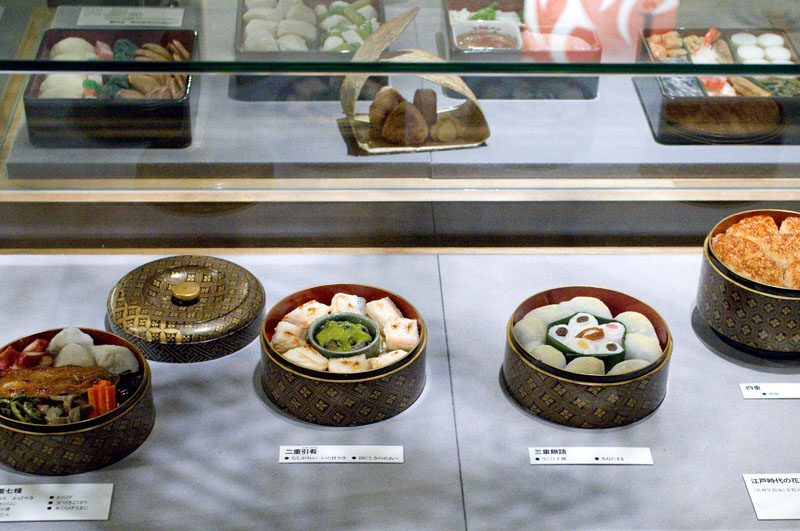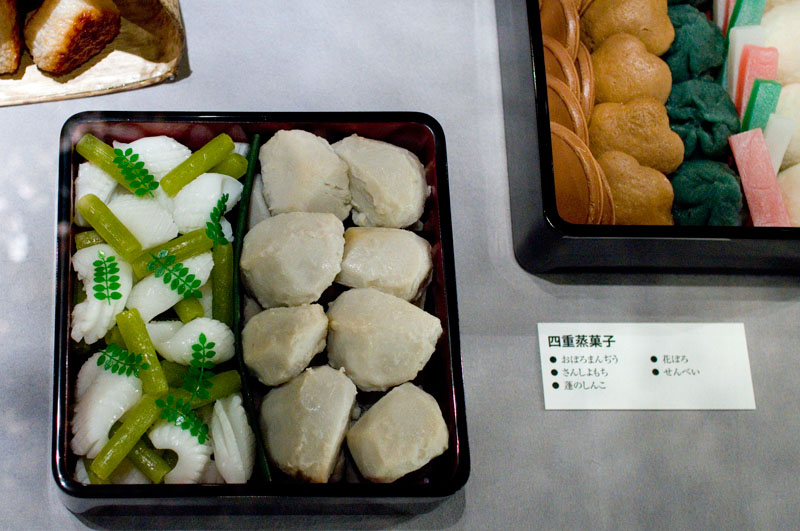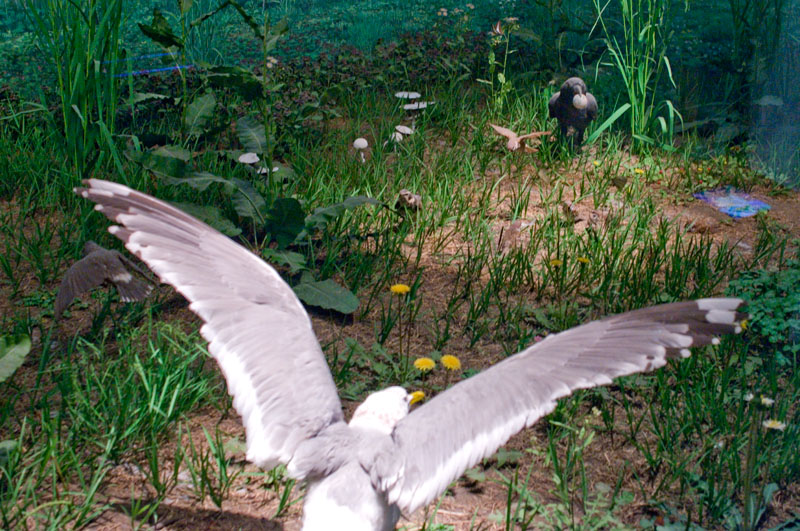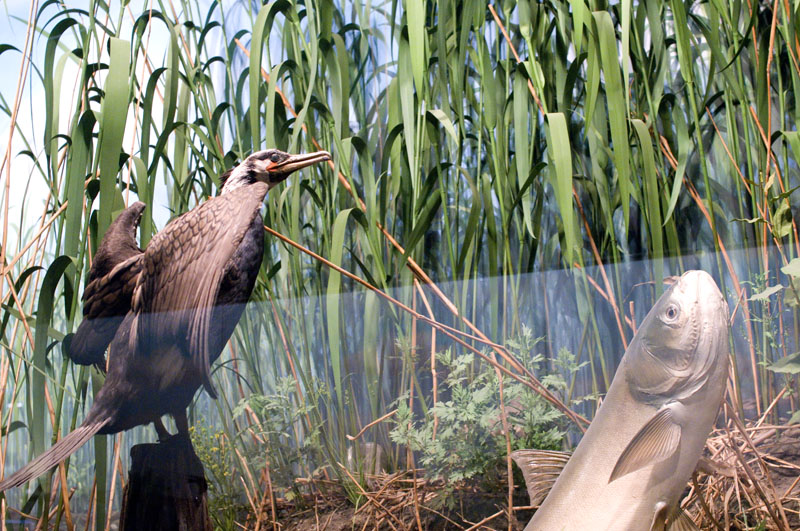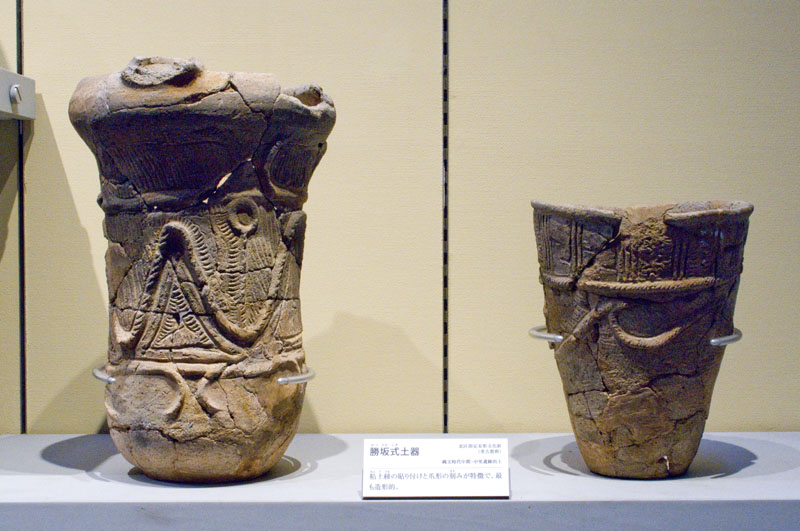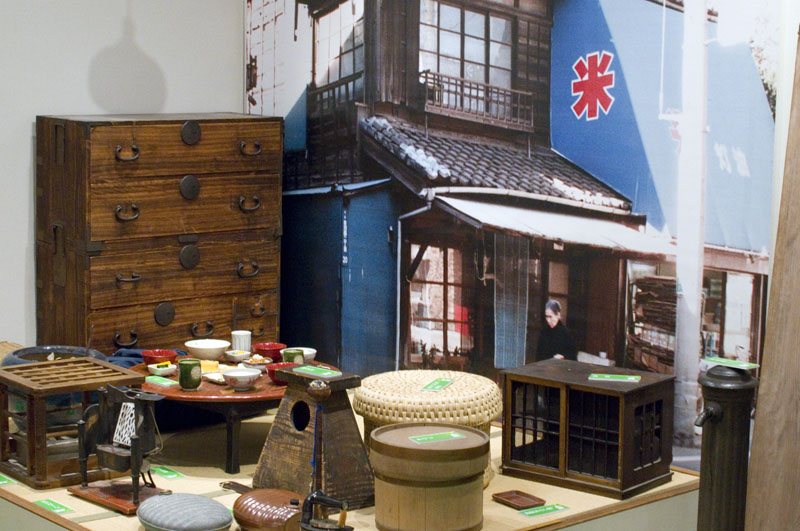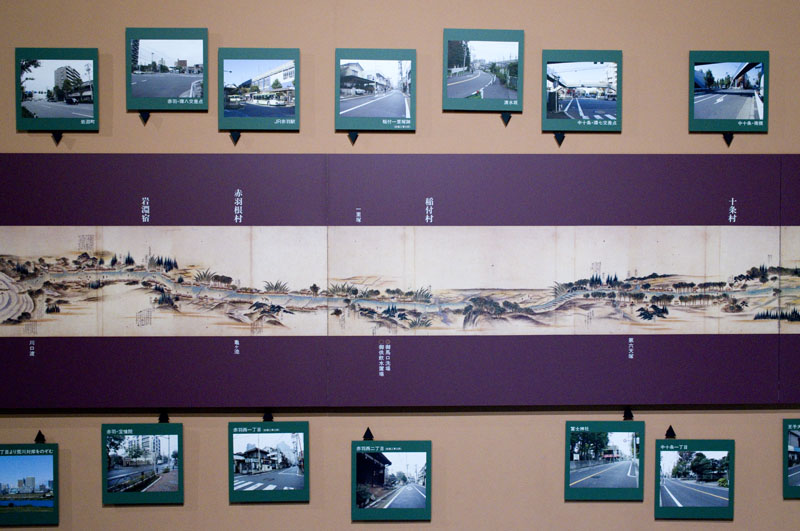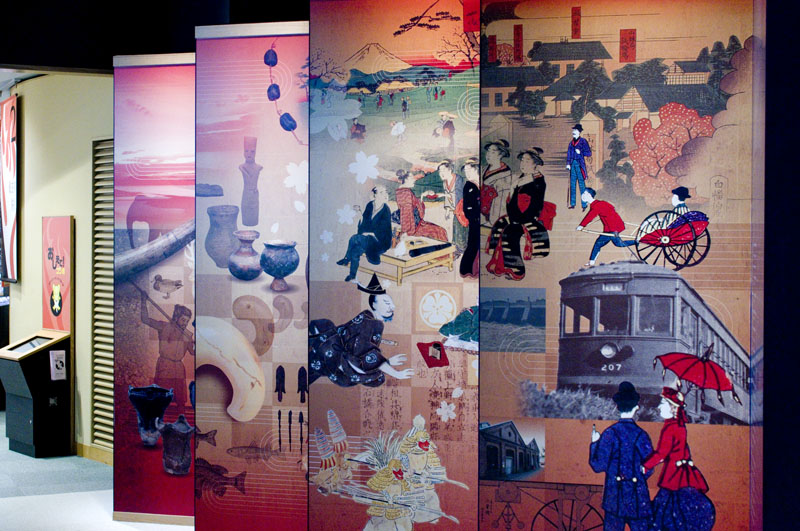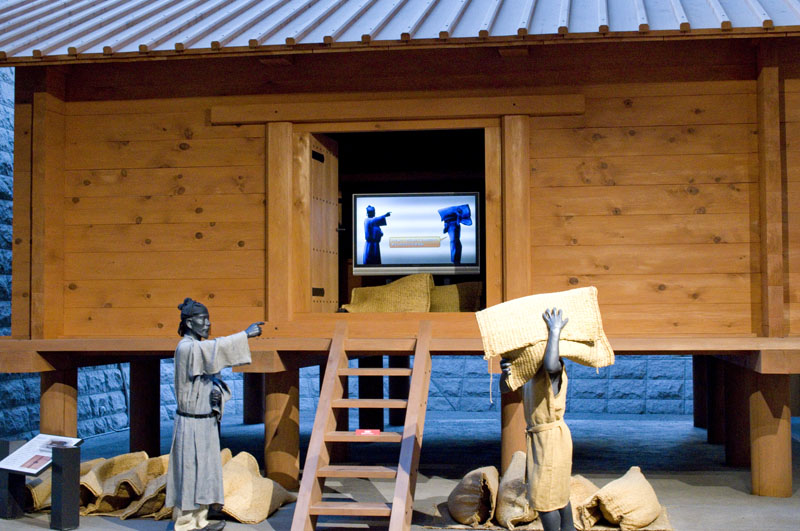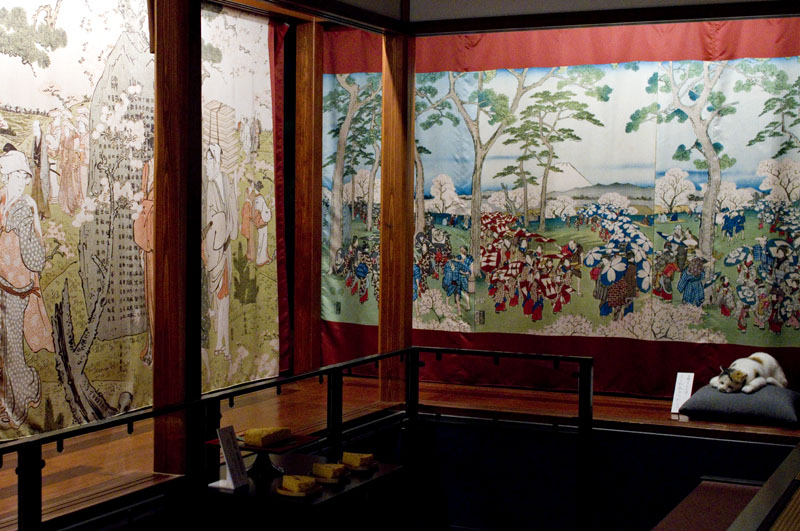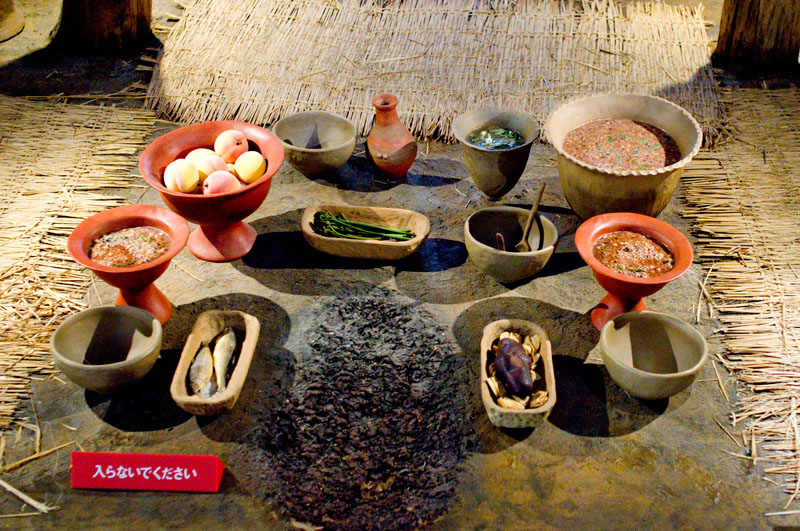
Run by the city government of Kita-ku in northern Tokyo, this well-curated history museum covers a number of topics of local interest, starting with archeological finds from local prehistoric settlements dating back 30,000 years. The area's history is brought to life with full-size recreations of living and commercial quarters through the ages as well as dioramas, videos, old photographs and ukiyoe prints, and lots of old pottery.
One nice aspect of locally run history museums is that they can focus on very specific aspects of local life. For example, during the Edo era Kita-ku was a popular destination for cherry-blossom viewing parties, and one exhibition is devoted to numerous recreations of the bento boxes that were popular with visitors picnicking under the cherry trees.
The area was also known for its root vegetables such as radishes, turnips, carrots and burdock, and these are illustrated with life-size recreations of the original heirloom vegetables. There are also exhibits devoted to life along the Arakawa River, flood control measures, and the present-day ecosystem of plants and animals living along the river.
In addition to the permanent exhibition area on the first floor there are two separate art galleries on the third floor that show the work of local artists and craftsmen, and a temporary exhibition area on the second floor, which during a recent visit had a show examining everyday life in the area fifty years ago and ninety years ago.
There's also a cafe (serving lunch 11:30am-3pm), a library and a small museum gift shop. Visitors can borrow an English-language audio guide, which is informative but rather dry; there's also a very detailed twelve-page English-language brochure.
